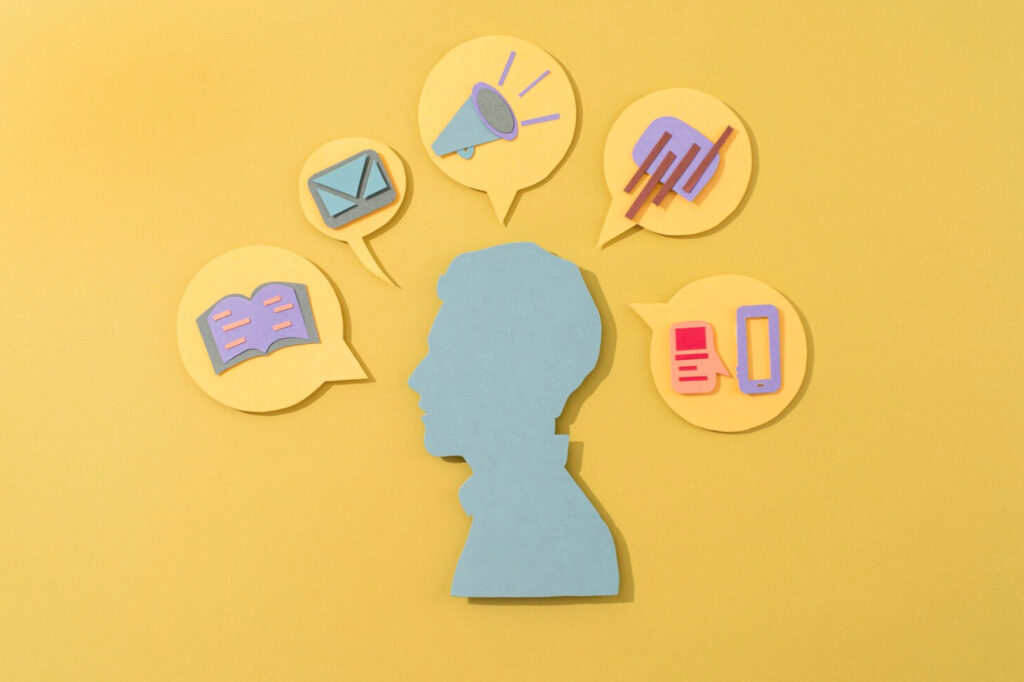Content marketing is a marketing strategy that involves creating valuable, relevant, and consistent content to attract and retain a clearly defined audience – and ultimately drive profitable customer action. To create successful content marketing campaigns, it’s essential to understand the psychology behind what motivates people to take action. In this article, we’ll explore the impact of psychological factors on content marketing strategies, including how to use emotions and cognitive biases to influence consumer behavior.
The Impact of Psychological Factors on Content Marketing Strategies
Maslow’s hierarchy of needs is a useful framework for understanding the different levels of human needs that motivate behavior. At the base of the pyramid are the most basic physiological needs like food, water, and shelter. The next level is safety needs, followed by social needs, esteem needs, and finally self-actualization needs at the top of the pyramid.
When creating content marketing strategies, it’s important to consider where your target audience falls in this hierarchy of needs. For example, if you’re marketing a product that satisfies a basic physiological need like hunger, your content might focus on how your product can provide nourishment and satisfy hunger cravings. On the other hand, if you’re marketing a luxury product, your content might focus on how the product can help customers feel more successful or accomplished, tapping into their esteem needs.
By understanding where your target audience falls in the hierarchy of needs, you can create content that resonates with them and motivates them to take action, whether that’s making a purchase or sharing your content with their network.
Social Proof
Social proof is a powerful psychological phenomenon that can have a significant impact on consumer behavior. Essentially, people are more likely to do something if they see others doing it too. This is because we often look to others to determine what the correct behavior is for a given situation.
In the context of content marketing, incorporating social proof into your strategy can be a highly effective way to establish credibility and build trust with your audience. This might involve including customer testimonials or reviews on your website, showcasing social media followers or likes, or using influencer marketing to tap into the authority and credibility of industry experts.
By demonstrating that others have had positive experiences with your product or service, you can make it more appealing and trustworthy to potential customers. This can help to increase conversions and drive more sales, while also building a loyal customer base that is more likely to share your content with their network. Overall, social proof is a highly effective tool for any content marketer looking to build credibility and drive results.
Fear of Missing Out (FOMO)
Fear of Missing Out (FOMO) is a common psychological phenomenon that many people experience, especially in today’s highly connected world. FOMO refers to the fear that you might miss out on social events or experiences that others are enjoying. This can lead to feelings of anxiety or stress, as well as a strong desire to participate in the activity or event in question.
In the context of content marketing, FOMO can be a highly effective tool for creating a sense of urgency and encouraging your audience to take action. For example, you might use limited-time offers or exclusive deals to create a sense of scarcity and encourage customers to make a purchase before time runs out. You might also use social media to showcase the experiences of others who have used your product or service, highlighting the potential benefits of participation and creating a sense of excitement around your brand.
By tapping into the power of FOMO, you can make your content marketing strategy more engaging and effective, while also building a strong connection with your audience. This can help you to drive conversions, build brand awareness, and create a loyal customer base that is more likely to share your content with their network. Whether you’re promoting a product, service, or event, incorporating FOMO into your content marketing strategy is a smart and effective way to motivate your audience to take action.
Understanding Consumer Behavior to Create Effective Content Marketing Campaigns
To create effective content marketing campaigns, it’s important to understand your target audience and their behavior. This can help you to create content that resonates with them and motivates them to take action. Here are three important tools that can help you achieve this goal:
- Buyer Personas – A buyer persona is a semi-fictional representation of your ideal customer based on market research and real data about your existing customers. By creating detailed buyer personas, you can better understand the needs, goals, and pain points of your target audience. This can help you to create content that speaks directly to their interests and needs, making your marketing efforts more effective.
- Customer Journey Mapping – Customer journey mapping is the process of visualizing the steps that a customer takes to interact with your brand, from initial awareness to post-purchase support. By understanding the different touchpoints and interactions that customers have with your brand, you can create content that meets their needs at every stage of the journey. This can help you to build trust, establish credibility, and create a more engaging and effective marketing strategy.
- A/B Testing – A/B testing is a method of comparing two different versions of a piece of content or marketing campaign to determine which one is more effective. By testing different variables, such as headlines, images, or calls to action, you can optimize your content to better meet the needs and preferences of your target audience. This can help you to improve your conversion rates, increase engagement, and drive more sales.
The Role of Emotions in Content Marketing and Its Impact on Consumer Behavior
The role of emotions in content marketing cannot be overstated. Emotions are an essential component of human behavior and play a significant role in how people respond to marketing messages. Here are three ways in which emotions can be used in content marketing to influence consumer behavior:
- Emotion-Triggering Content – Creating content that triggers an emotional response in your target audience can be a highly effective way to engage them and motivate them to take action. For example, you might create content that inspires feelings of joy, sadness, fear, or excitement, depending on the goals of your campaign. By tapping into the emotions that drive your audience, you can create a deeper connection with them and increase the likelihood that they will engage with your brand.
- Storytelling – Storytelling is a powerful tool for creating emotional connections with your audience. By telling stories that resonate with your target audience, you can help them to see themselves in your brand and build trust and loyalty. Whether you’re telling stories about your brand’s history, your customers, or the impact of your products or services, effective storytelling can help you to create a strong emotional connection with your audience and drive engagement.
- Use of Humor – Humor is a highly effective tool for creating positive emotions and building relationships with your audience. By using humor in your content marketing campaigns, you can create a sense of lightheartedness and playfulness that can help to break down barriers and build trust with your audience. However, it’s important to be mindful of the type of humor you use and ensure that it aligns with your brand values and resonates with your target audience.
Cognitive biases are errors in thinking that can influence the way people make decisions. In content marketing, understanding these biases can help you to create more effective campaigns that speak to your audience’s needs and motivations. Here are three common cognitive biases and their influence on consumer decision-making:
- Anchoring Bias – Anchoring bias is the tendency to rely too heavily on the first piece of information encountered when making a decision. This bias can influence consumer decision-making by shaping their perception of the value of a product or service. For example, if a consumer sees a high-priced item first, they may be more likely to perceive a lower-priced item as a better value, even if it is not objectively better.
- Confirmation Bias – Confirmation bias is the tendency to seek out information that confirms one’s existing beliefs and ignore information that contradicts them. This bias can influence consumer decision-making by leading them to choose products or services that align with their existing beliefs and values, rather than objectively evaluating all available options.
- Choice-Supportive Bias – Choice-supportive bias is the tendency to remember one’s choices as better than they actually were. This bias can influence consumer decision-making by shaping their perception of the value of a product or service after the fact. For example, a consumer may remember a product as being more effective than it actually was simply because they chose it over other options.
Understanding these cognitive biases can help you to create more effective content marketing campaigns that speak to your audience’s needs and motivations. By acknowledging these biases and tailoring your messaging to address them, you can increase the effectiveness of your campaigns and drive better results.
Conclusion
Understanding the psychology of content marketing is essential for creating effective campaigns that resonate with your target audience and drive meaningful results. By leveraging psychological principles such as Maslow’s hierarchy of needs, social proof, and FOMO, you can create content that motivates your audience to take action and builds trust and credibility with your brand.
Additionally, understanding consumer behavior through techniques such as buyer personas, customer journey mapping, and A/B testing can help you to create campaigns that are tailored to your audience’s needs and preferences. By leveraging emotions and storytelling to create content that speaks to your audience on a deeper level, you can establish a strong connection with your target audience and drive meaningful engagement.


